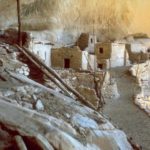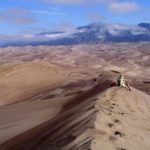City of Rocks in Idaho
By Victor Block
If you are a fan of our country’s national parks, you’re in good company. More than 300 million people – about equal to the entire U.S. population – enjoy the National Park system every year. And 2016 is a special year, because the National Park Service is celebrating its 100th anniversary.
The words “national parks” often conjur up images of soaring landscapes and dramatic terrain, but that doesn’t tell the whole story. Among the more than 400 units in the park system are smaller, lesser-known sites around the country that have their own special appeals. They include magnificent scenery, overlooked chapters of American history and intriguing learning experiences.
Here are a few:
Westward Ho – In 1849, an artist creating pictures of the Overland Trail leading to the California Gold Rush passed through a region of dramatic granite spires in Idaho that he dubbed “City of Rocks.” When a national reserve was established there 140 years later, the name stuck. The outcroppings soar above sagebrush plain to create an other-worldly landscape.
The site also recalls the westward migration of early pioneers. Deep ruts cut into the ground by wagon wheels remain visible today. Inscriptions written on large rocks still bear the names of hardy souls who undertook the treacherous journey during the nation’s westward expansion.
Pots and pools – Popping mudpots and pools of boiling water are among geological creations that compose the landscape of Lassen Volcanic National Park in California. Jagged peaks tell the story of the area’s eruptive past. All four types of volcanoes found throughout the world – plug dome, cinder cone, shield and composite – are found within the park. Gentle trails and scenic overlooks provide access into, and views over, the most dramatic areas.
Inland beach– One of the largest and finest stretches of sand in the United States is located in landlocked Colorado. The tallest dunes in North America are the central attraction at Great Sand Dunes National Park. Topping them all is the spectacular Star Dune, which peaks at 750 feet.
The diverse landscape also includes rolling grasslands, wetlands, aspen forests and alpine lakes. Visitors may hike or sand sled on the dunes and, when summer sand temperatures can reach 150 degrees, cool off by splashing in Medano Creek or exploring shaded forests and a nearby waterfall.
Early Americans- Some 150 million years ago, a much larger river in what now is Utah attracted 10 different types of dinosaurs to its banks. Their bones remain embedded in rock at Dinosaur National Monument. Most are fossils of Sauropods, high, long-necked plant eaters which were the biggest creatures ever to walk on earth. Other specimens range from large to small.
Reminders of life of another kind also are found in the area. Rock petroglyphs remain from 800 to 1,200 years ago when Fremont Indians left their marks. Near them stand remains of homesteads of settlers who arrived during the 19th and early 20th centuries.
Navajo Nation – It’s the prehistoric Puebloan People who are recalled at Navajo National Monument in Arizona. Three 13th-century dwellings, two accessible to the public, are perched in natural sandstone alcoves on cliffs overlooking wide canyons. The structures include roof beams, hand and foot holds, and other original architectural elements. A museum displays pottery, tools and other items of various Native American groups that took up residence in the Southwest including the Navajo, who live there today.
Famous Family – Many decades after early Spanish explorers encountered families of Puebloan people in the Southwest, another family helped to establish and lead the new nation that was born along the eastern seaboard. A house in Quincy, Mass. named “Peace field” served as home to John Adams, John Quincy Adams and subsequent generations of the famous family from 1788 to 1927. The house, now preserved in the Adams National Historical Park, was originally purchased in 1787 by John Adams, then the minister to Great Britain, who later served as vice president and second president of the United States (1797-1801). John Quincy won fame as a diplomat, member of Congress, Secretary of State and the sixth president (1825-1829). Furnishings in the house include items acquired by each generation of the family.
Park Patron – A lot of credit for the National Park system goes to President Theodore Roosevelt. During his stint as chief executive (1901-1909), “Teddy” pushed through legislation that established five national parks, along with a bill which empowered presidents who followed him to designate historic and other landmarks as national monuments.
His conservation and preservation efforts are honored on a 91-acre outcrop in the Potomac River. What now is Theodore Roosevelt Island was used in the past by Native Americans as a fishing spot, and a regiment of Black Union Troops encamped there during the Civil War. Visitors today learn about the legacy of our 26th president at a memorial that includes his statue and most memorable quotes. Teddy would be delighted to stroll along a boardwalk which leads through the quiet marsh and forest setting.
For information about the National Park System, including both its famous and not-so-famous sites, call 202- 208-6843 or visit nps.gov.
Photos/submitted














